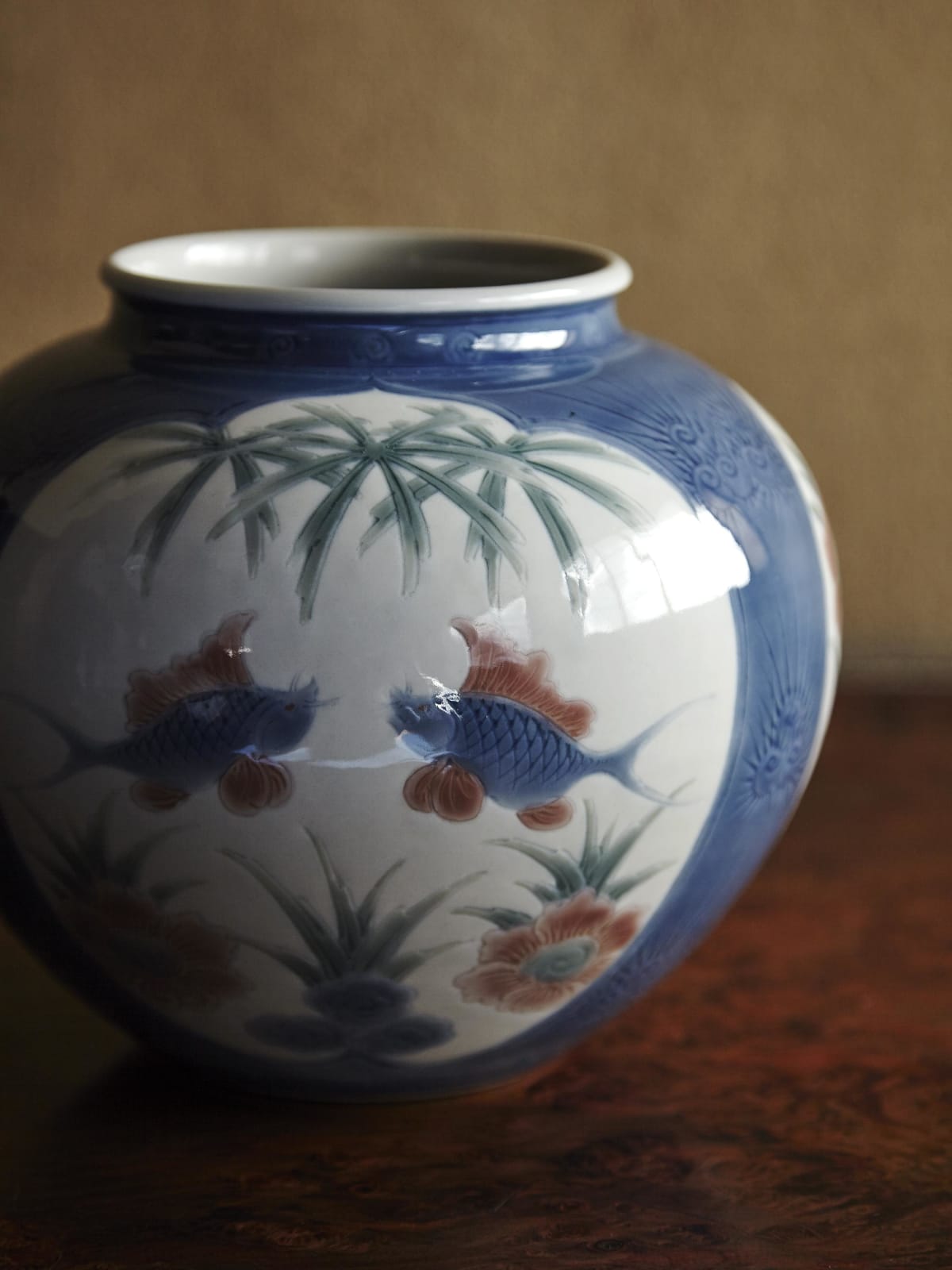Itaya Hazan (1872–1963)
Flower Vase with Underglaze Design of Flowers and Birds
Sealed sign “Hazan” on foot
With a box signed by the artist, double boxed
w. 21.7 x h. 18.5 cm
With a box signed by the artist, double boxed
w. 21.7 x h. 18.5 cm
Further images
Itaya Hazan particularly excelled at the underglaze technique in ceramic making. Saiji, as addressed by Hazan himself, incises design on clay before glaze is applied. Ceramic works born out of Hazan’s meticulous and delicate hands possess an exquisite quality of enchanting depth that constantly appeals to the viewers.
Hazan is largely influenced by his training at the Tokyo Art School led by Okakura Tenshin, which focused on copying of the classics, sketching, and creative practice. Several sketch books, such as Moyo-shu (collection of models), Kaka-funpon (model book of flowers and fruits) and Kibutsu-zushu (collection of vessel illustrations), are produced by Hazan during this period as the outcome of his studies. The figures of bird, fish and hare can be found in vol. 3 of Moyo-shu, indicating their original source of the late Ming Chinese Swatow ware. Hazan borrowed Swatow ware’s vigorous and free representation of animals on the one hand, and displays a graceful and refined taste on the other. It seems that Hazan is particularly in favor of this motif, and had worked on it since early Taisho era till his late years.
An exceptional fruit harvested at Hazan’s maturity, both in terms of his exploration of the underglaze techniques and refinement of the pattern design, the present work is a great piece that exemplifies Hazan’s accomplishment in ceramic art.
Itaya Hazan (ceramist; 1872–1963)
Ibaraki-born ceramist. His real name is Kashichi. Graduated from the Tokyo Fine Art School. Started his ceramic-making career after being appointed as a teacher of ceramic art. Produced a great many exquisite works of color porcelain, white porcelain, and blue celadon. Established his own style, which developed novel glazing methods, created noble forms, realized soft and calm colors and represented relief lines on thin ceramics. Member of Teikoku Bijutsuin (the Imperial Fine Art Academy), an Imperial Court Artist, and received the Order of Culture.
Hazan is largely influenced by his training at the Tokyo Art School led by Okakura Tenshin, which focused on copying of the classics, sketching, and creative practice. Several sketch books, such as Moyo-shu (collection of models), Kaka-funpon (model book of flowers and fruits) and Kibutsu-zushu (collection of vessel illustrations), are produced by Hazan during this period as the outcome of his studies. The figures of bird, fish and hare can be found in vol. 3 of Moyo-shu, indicating their original source of the late Ming Chinese Swatow ware. Hazan borrowed Swatow ware’s vigorous and free representation of animals on the one hand, and displays a graceful and refined taste on the other. It seems that Hazan is particularly in favor of this motif, and had worked on it since early Taisho era till his late years.
An exceptional fruit harvested at Hazan’s maturity, both in terms of his exploration of the underglaze techniques and refinement of the pattern design, the present work is a great piece that exemplifies Hazan’s accomplishment in ceramic art.
Itaya Hazan (ceramist; 1872–1963)
Ibaraki-born ceramist. His real name is Kashichi. Graduated from the Tokyo Fine Art School. Started his ceramic-making career after being appointed as a teacher of ceramic art. Produced a great many exquisite works of color porcelain, white porcelain, and blue celadon. Established his own style, which developed novel glazing methods, created noble forms, realized soft and calm colors and represented relief lines on thin ceramics. Member of Teikoku Bijutsuin (the Imperial Fine Art Academy), an Imperial Court Artist, and received the Order of Culture.











